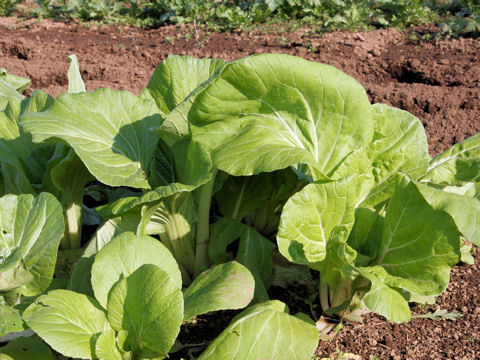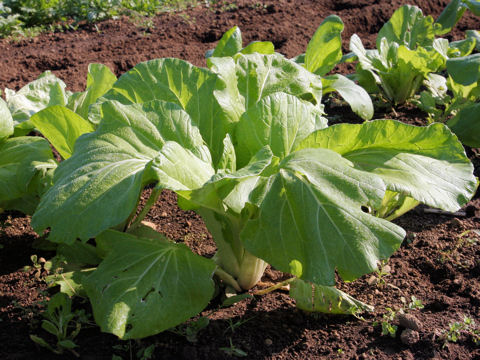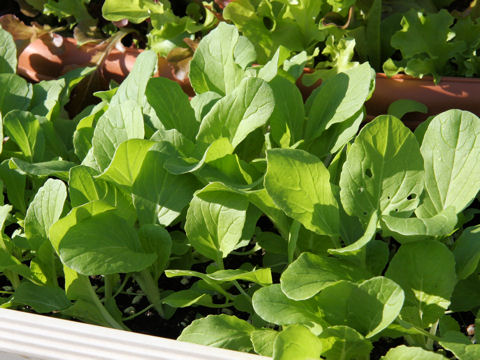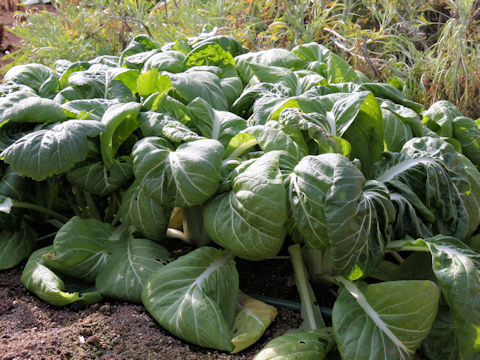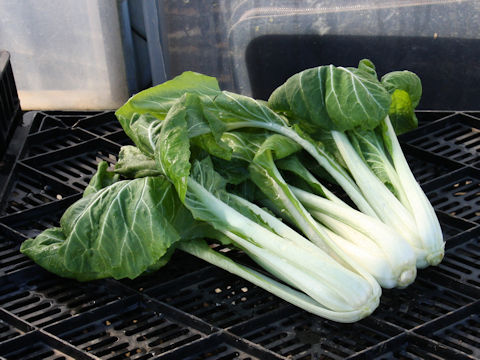
|
The "Oosaka-shiro-na" (Brassica crapa var. amplexicaulis) belongs to Brassiaceae (the Mustard family). It is a perennial herb that is thought to be a hybrid of "santou-sai" or "Chinese cabbage" and "Pak choi". It was first cultivated in the Edo period (1603-1868), and was also called "tenma-na" because it was grown in abundance in the Tenmabashi area of central Osaka in the early Meiji period (1868-1912). It grows quickly, has a mild, simple flavor, and is used in pickles, boiled greens, simmered dishes, stir-fries, etc. The base of the leaf forms a bulb, while the top of the leaf spreads out. There are three types of "Oosaka-shiro-na": early, mid-ripening and late, and it is now possible to grow them all year round.
|

